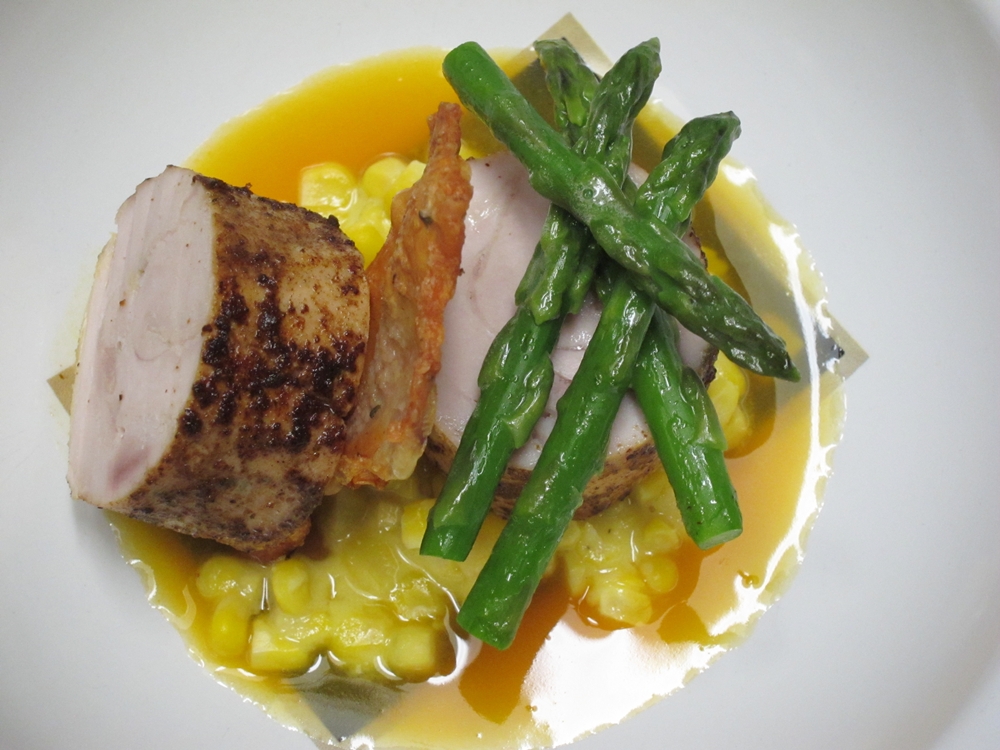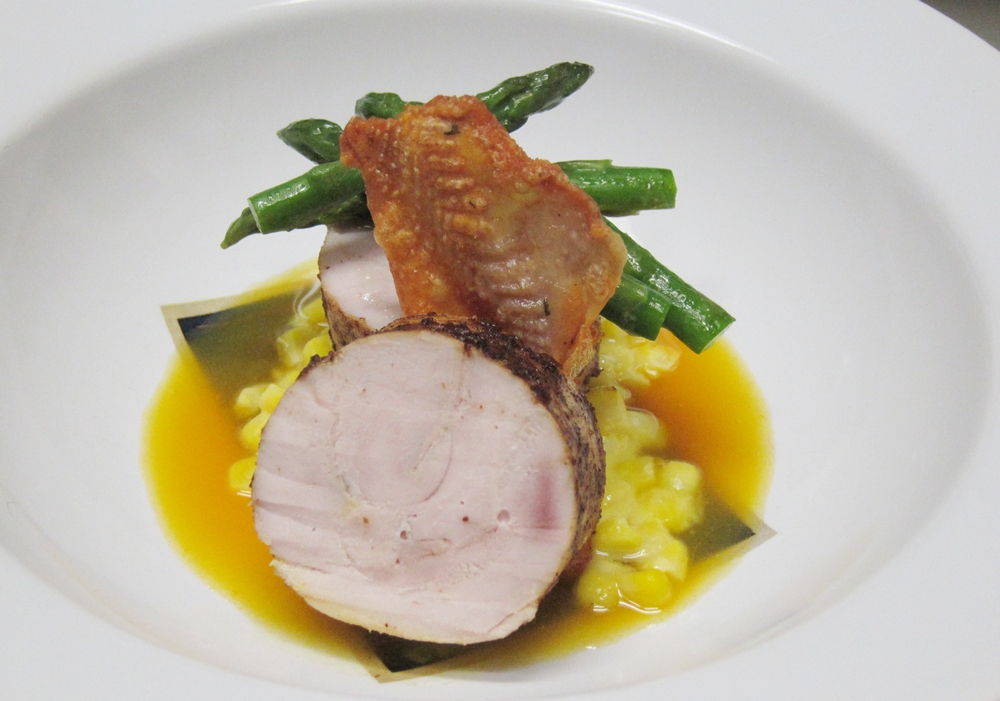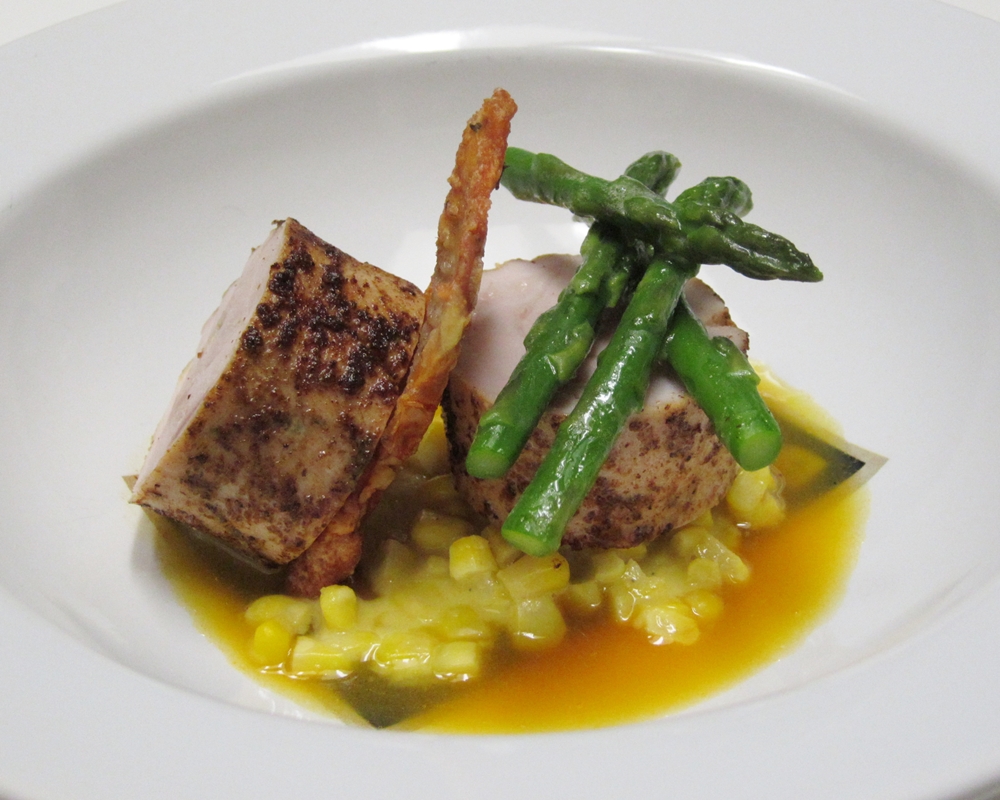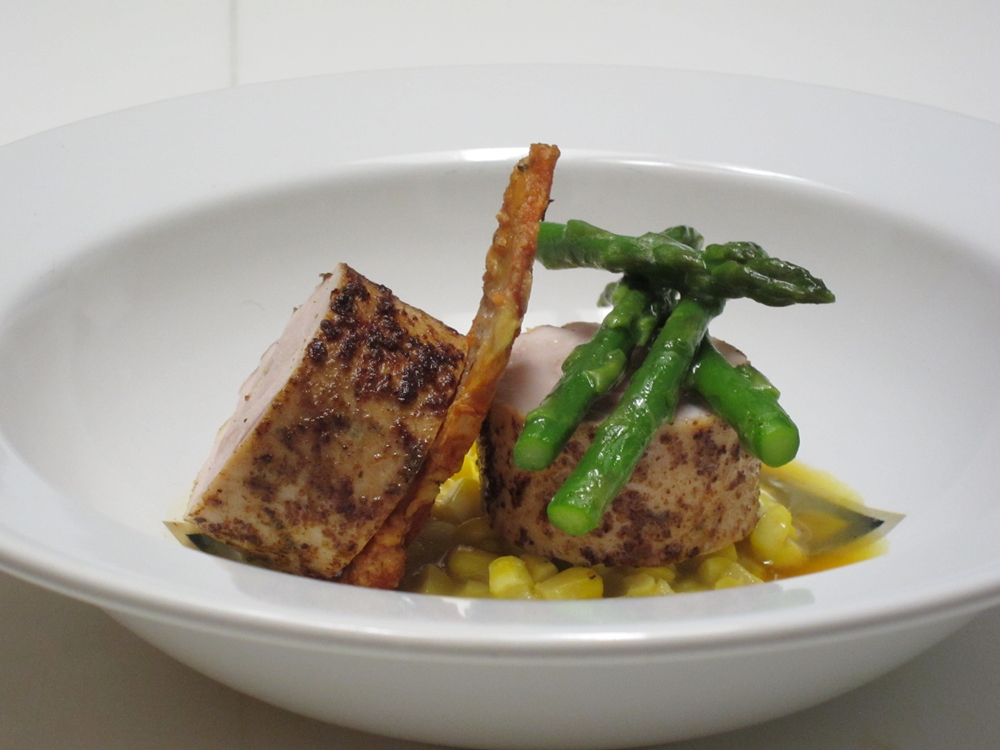I have cooked pheasant a couple of times before and was always underwhelmed. I hear wild pheasant is a different animal and is delicious, but this farm-raised, store-bought bird is always ho-hum. The legs are tough and stringy with numerous little tendons/bones and the breast meat seems to dry out very fast even though it does have a deeper flavor than a run-of-the-mill chicken. This time I treated the breasts and legs very differently. For the legs I removed the thigh bone and painstakingly removed every string, tendon and skinny bone from the drumstick (but left the main femur there) while keeping the whole quarter in one piece. A pain in the ass that was. Then I seasoned the leg quarters with salt, cayenne, pepper, thyme and bay. I placed them in a bowl of buttermilk and let them cure overnight. the next day we had them fried after a quick dredge in flour. These were pretty good with an eggplant puree. Unfortunately, my camera settings were all screwed up and I have no decent pictures. On to the breasts.
I seasoned those with salt, pepper and thyme and let them sit overnight as well. Thanks to the very nice folks at Ajinomoto (really friendly, helpful and excellent customer service) I have a good bit of Activa RM (Transglutaminase), aka meat glue. This is an enzyme that binds specific types of proteins together, effectively gluing them. Ever wonder how a certain type of turkey at the deli counter looks like it is in one large uniformly shaped piece? Transglutaminase. I dusted the surface of the meat with a bit of Activa, no more than 8 grams or so, and then rolled it into a tight log using plastic wrap. The pheasant log went back to the fridge for the Activa to set, about 6 hours. To cook it, I sealed it in a FoodSaver bag and cooked it en sous vide for about 2 hours at 146 F.
The pheasant was cooked just in time to be plated. To finish it I borrowed an idea from Marc Vetri in his book “Il Viaggio di Vetri” and coated the cooked pheasant with a mixture of olive oil and dried porcini powder. He uses this method to cook halibut and serves it with a blueberry sauce. Then I gently pan cooked the meat for a few minutes over medium heat. The smell was amazing and the porcini really gave the seasoned pheasant a wonderful flavor kick. The enzyme bound the two breast halves perfectly and the slices were neat and efficient. More importantly the meat was cooked perfectly and was not dry. I did not want to throw away the pheasant skin, so I had it seasoned just like the breasts and for the same amount of time. Then I baked the skin at 400 F sandwiched between parchment lined baking sheets until it got golden and crispy.
The pheasant was good, but the component that I cannot wait to make again here is the creamed corn. The recipe for that is straight from “The French Laundry” cookbook and it is utterly delicious. Too often is creamed corn made the butt end of jokes. It can be soupy, mushy, loaded with salt and cream. Here is how to elevate this humble dish to pure sweet corn heaven. All that is needed is fresh corn, a little butter and salt. No cream included at all, yet the end result is smooth, creamy and full of corn flavor. The secret is using corn juice. More than half of the fresh corn kernels was pureed in a blender and then strained to yield corn juice. The remaining kernels were blanched in boiling water and cooled. To finish the dish, the corn juice gets heated and because of its starch content it thickens to the consistency of whipping cream. The last step is to add the corn kernels, butter and seasoning. That’s it for the best and most addictive creamed corn.
The sauce is based on a recipe from Michel Richard’s book “Happy in the Kitchen” where he uses it in a squab dish. It consists of fresh carrot juice, orange juice, ginger and cut up peach. I used a very flavorful nectarine that I had on hand instead of the peach. I also decided the sauce was a bit too sharp for the rest of the dish and rounded it out with a couple of tablespoons of butter that I whisked in right before plating.
I wanted to garnish the finished dish with clusters of Enoki mushrooms but as luck would have it I could not find any Enoki that day and went with asparagus. I blanched the spears in salted water and quickly cooled them in ice water. I only wanted the top two inches here, so I trimmed that off the stalks (used the stalks for an excellent risotto the next day). Right before service, I finished cooking the asparagus tips in a warm butter emulsion (beurre monte). The other garnish was the crispy and delicious pheasant crackling.




